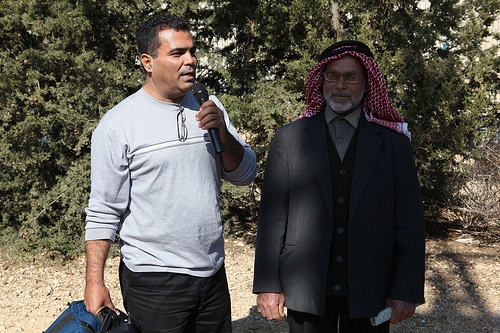On Saturday, 22.1.11, About fifty people joined Zochrot’s tour of the destroyed Palestinian village of al-Qabu, on the southwestern outskirts of Jerusalem. Most were Israelis, residents of Jerusalem and the surrounding area. Each received a copy of the booklet, “Remembering al-Qabu,” that we published in conjunction with the tour. Today the remains of the village and its lands are part of JNF’s Begin Park. All the homes in the village were demolished. In addition to the park, Mevo Beitar, an Israeli locality, was also established on the village’s land.
Abu Jamal, Hamid Ubaydd Allah, 75 years old, a refugee from al-Qabu, led the tour, shared his memories of life in the village and told us how he feels today. He now lives in the village of Wadi Fukin, on the West Bank, only three kilometers from his former village. We’d asked him to come with his son and grandson to tell us the history of the village. Of course, he’s not allowed to visit without permission from the Israeli authorities. Abu Jamal welcomed the group on the outskirts of al-Qabu and led us through the extensive agricultural lands that belonged to his family and to others. He was 12 when he and his family were forced to leave the village. He described how the residents of al-Qabu, before it was captured, plowed the land and sowed crops, how they cultivated the family’s olive groves. There was a small vegetable garden next to his house, like there was next to most of the homes, with pomegranate and fig trees, grape vines and other plantings.
At one point in the tour, Abu Jamal stood next to a pile of stones about two meters high arranged around a metal pole. He explained that it marks the boundary between Israel and the West Bank. It’s on his land. In theory, he could have remained on the portion of his land that wasn’t captured in 1948. But the reality on the ground is different. The Israeli boundary marker slid a few kilometers past the Green Line to a place where the Israeli army set up a military checkpoint which now marks the actual crossing point between the state of Israel and the West Bank. It’s very close to the nearest house in Wadi Fukin. The tour passed near Palestinian villages on the West Bank, such as Battir and Husan. So, about fifteen minutes after the tour began, two military vehicles showed up to make sure we don’t "cross the border".
The tour came to the first demolished house at the entrance to al-Qabu. It was the mukhtar’s home. We erected a sign identifying the village. We walked across the threshing floor. Abu Jamal stood beside a large olive tree and told us that during the harvest season the village elders would sit at night beneath that tree, talk and pass the time.
There’s a cemetery in the center of the village. According to Abu Jamal, “it’s the Ubayd Allah family cemetery, my family’s. My grandfather, father, uncles and aunts, my relatives are buried here. It’s very painful to see the graves destroyed, the bones of my family scattered around.” The refugee’s family tried, as best if could, to replace the gravestones and close the graves again.
Abu Jamal brought us to the remains of his home. On the hilltop. “I was born here. It was a two-story house,” said Abu Jamal, who had planned this as the high point of the tour, telling us, emotionally: “I don’t believe anyone can forget their homeland, and I can’t either. I still have the key to my home,” taking a key out of his pocket and showing it to us. We erected another sign here, on the ruins of the house, identifying its owner, Abu Jamal’s father.
“The village had two olive presses, two mosques – one in the center of the village and the second next to the spring we’ll come to later, a school – a single room, and a “maqam” [holy place] below ground, in a cave, where the villagers would light oil lamps every evening.”
We walked from the center of the village over land covered with rocks and thistles, toward al-Qabu spring (in Hebrew it’s known as Ein Kobi or Ein Kabu) and the al-Umari mosque. Today it’s a well-preserved tourist site that’s part of Begin Park, with benches to sit on. The site includes a spring, an underground pool, the remains of water faucets, pools to water the animals and irrigate the surrounding orchard, and a square building, now closed, that was a mosque before 1948. Abu Jamal explained that each family had a portion of the orchard, in which it grew crops and fruit trees. The village’s flocks would rest and drink here in the afternoons. People working far from the village would come to the spring and could pray in that mosque. The underground pool was used both for bathing and for ritual ablutions before prayer.
Abu Jamal said: “For weeks during 1948 this location was filled with refugees from villages in the area. Those who had been expelled before us came because there was a lot of room here, and because there was water. They waited here, not knowing what they would do next. But when our village was captured we were also forced to leave, toward Bethlehem, and all the refugees who were here left with us.”
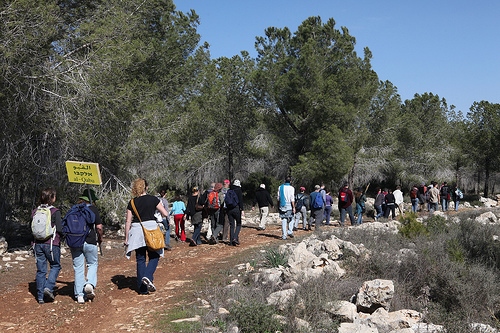
جوله الى قرية القبو / סיור לכפר אלקבו
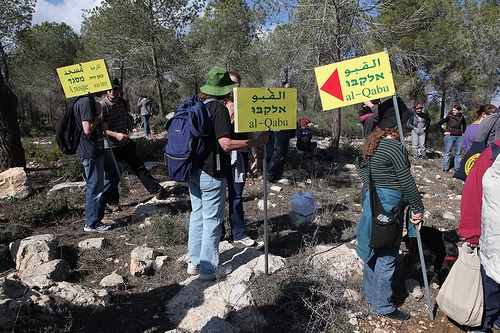
جوله الى قرية القبو / סיור לכפר אלקבו
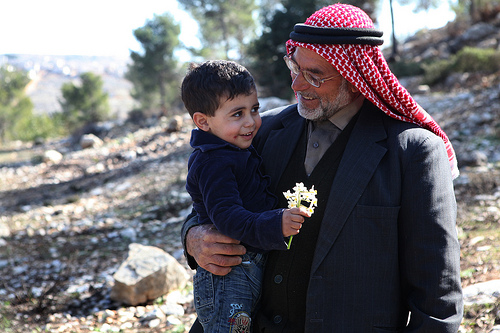
جوله الى قرية القبو / סיור לכפר אלקבו
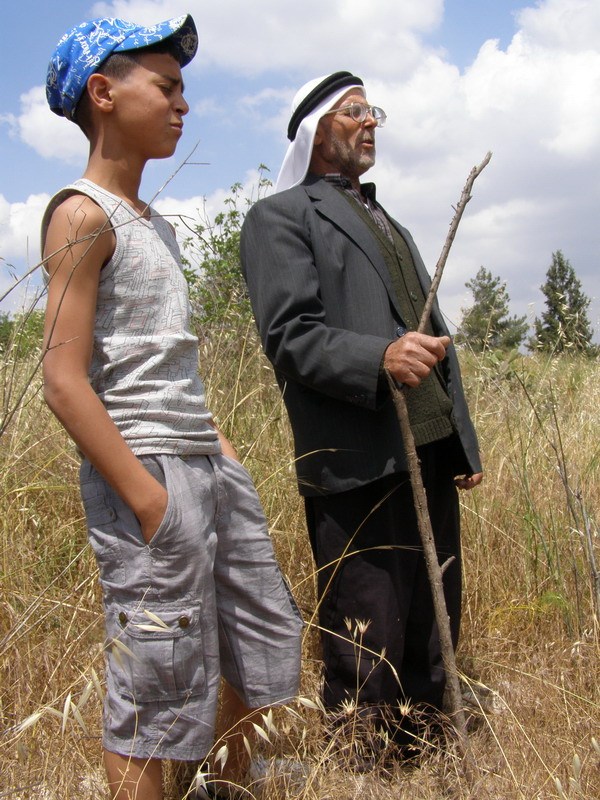
أبو جمال، لاجيء من قرية القبو / אבו ג'מאל, פליט מכפר אלקבו



